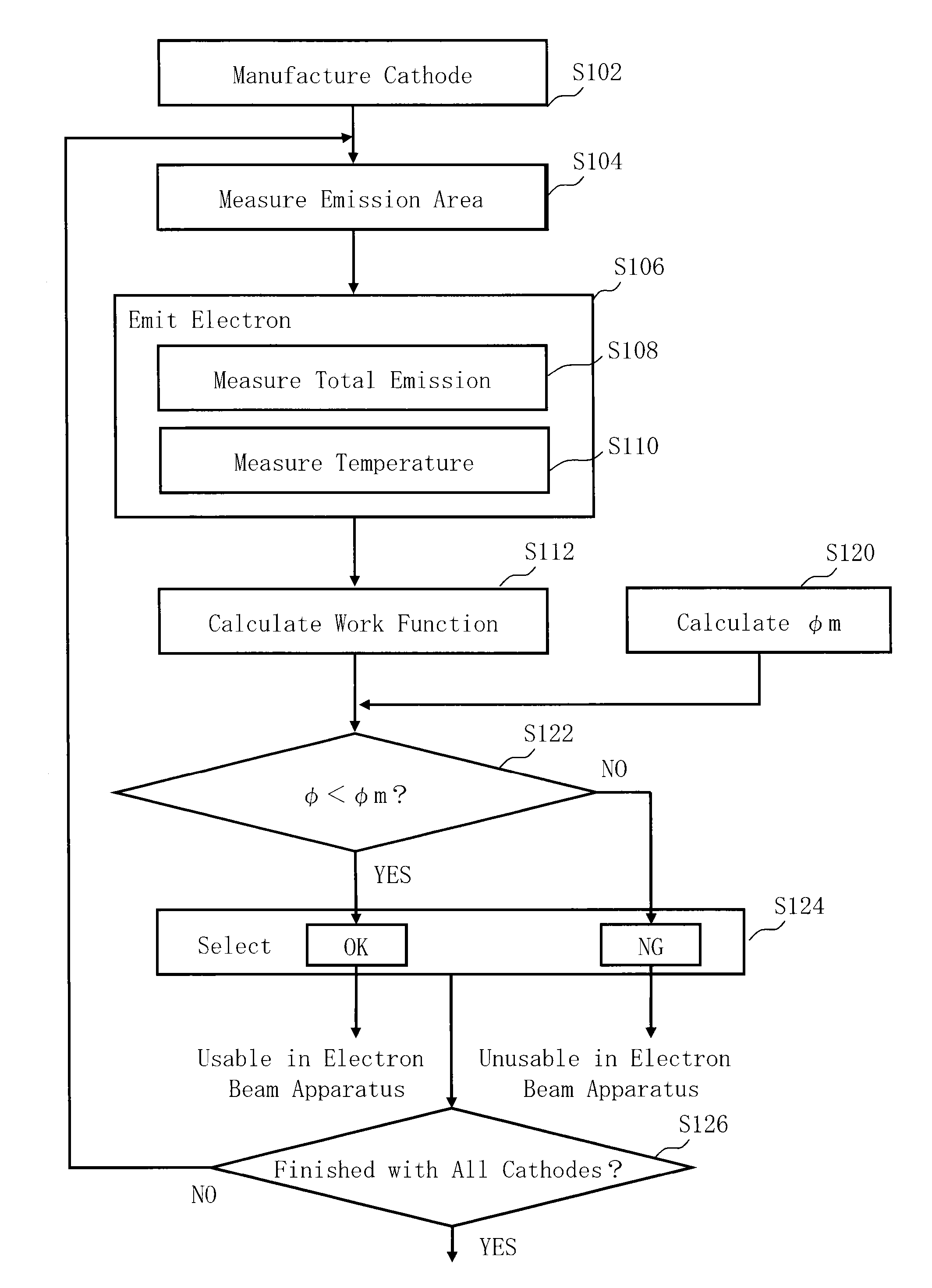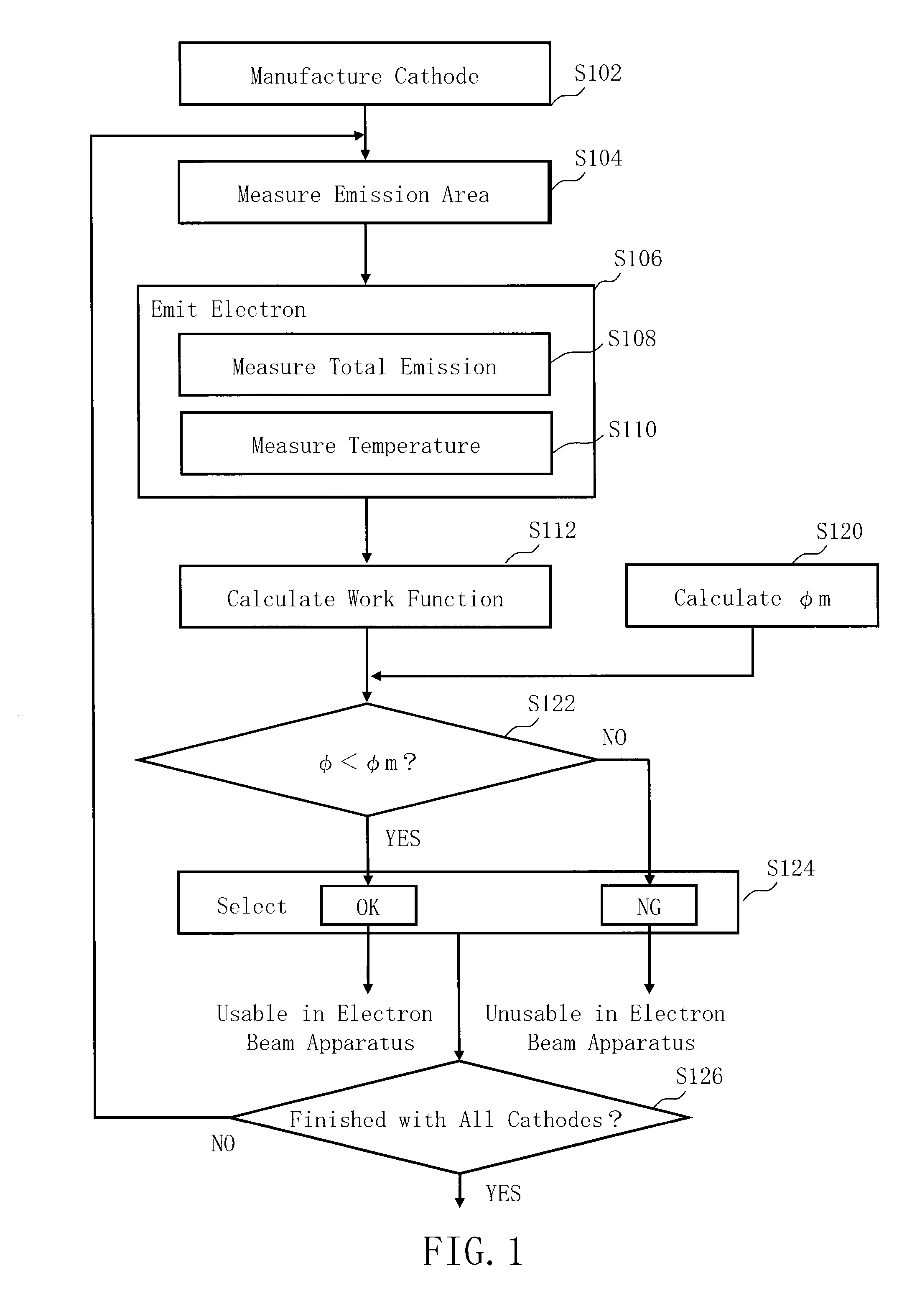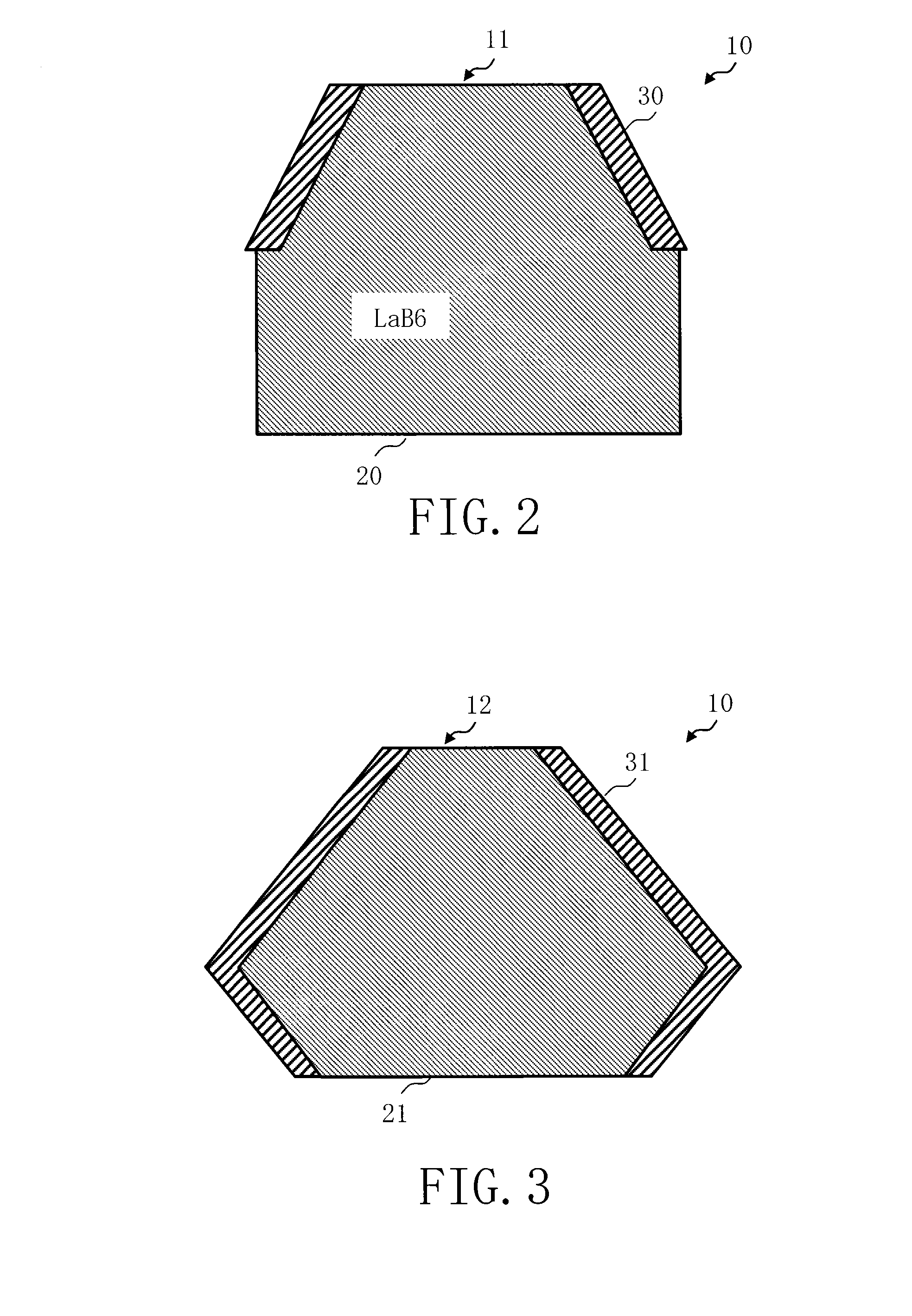Cathode selection method
a selection method and cathode technology, applied in the direction of discharge tube main electrodes, digital computer details, instruments, etc., can solve the problems of limiting the high brightness, shortening the life of the cathode, and increasing the writing tim
- Summary
- Abstract
- Description
- Claims
- Application Information
AI Technical Summary
Benefits of technology
Problems solved by technology
Method used
Image
Examples
embodiment 1
[0039]Brightness B of a thermionic emission type cathode using, for example, a lanthanum hexaboride (LaB6) crystal and the like can be defined by a Langmuir's formula (1) using a current density J of an electron emission surface, a cathode temperature T, a Boltzmann constant k, an elementary charge e, and an accelerating voltage V.
B=JeV / (πkT) (1)
[0040]Therefore, in order to increase brightness, it is apparent that the current density J of the electron emission surface needs to be increased. Furthermore, the current density J of the electron emission surface in Formula (1) can be defined by a following Richardson Dash Man's formula (2) by using work function (φ), a Richardson constant A, the cathode temperature T, and the Boltzmann constant k.
J=AT2exp(−φ / kT) (2)
[0041]The Richardson constant A is theoretically 120 A / cm2K2 for the LaB6 crystal, for example; however, it is known that actually about 80 A / cm2K2 is appropriate. From Formula (2), in order to increase the current density J...
embodiment 2
[0077]In Embodiment 1, a window is disposed to measure a temperature of an electron emission surface of a cathode in a lateral direction of an optical axis from a cathode to an anode, but it is not limited to this configuration. Contents are the same as those in Embodiment 1 except for those specifically described herein.
[0078]FIG. 16 is a conceptual diagram illustrating a device configuration of a parameter measurement device for obtaining work function according to Embodiment 2. FIG. 16 is the same as FIG. 7 except for a position where the window 58 is disposed and a member for forming an opening for avoiding a shield between the window 58 and an electron emission surface of the cathode 10. In FIG. 16, the window 58 is disposed in a wall surface of the vacuum case 50 on a back surface side of the anode electrode 54. By forming the opening in the anode electrode 54, it is possible to directly view the electron emission surface of the cathode 10 from the window 58 through the openin...
embodiment 3
[0080]In Embodiments 1 and 2, a parameter measurement device 300 for obtaining work function is configured such that only one cathode 10 can be disposed; however, it is not limited to this configuration. In Embodiment 3, an example in which a plurality of cathodes is simultaneously displaced is described. Contents are the same as those in Embodiments 1 and 2 except for those specifically described herein.
[0081]FIG. 17 is a conceptual diagram illustrating a device configuration of the parameter measurement device for acquiring the work function according to Embodiment 3. In FIG. 17, the measurement device 300 according to Embodiment 3 has a plurality of cathodes 10 simultaneously displaced inside the vacuum case 50. The Wehnelt 56 is displaced for each of the cathode 10. Furthermore, the anode electrode 54 may be common. The electron gun assembly power source 60 and the ammeter 70 may be displaced for each of the cathodes 10. The accelerating voltage power source, not illustrated, wi...
PUM
 Login to View More
Login to View More Abstract
Description
Claims
Application Information
 Login to View More
Login to View More - R&D
- Intellectual Property
- Life Sciences
- Materials
- Tech Scout
- Unparalleled Data Quality
- Higher Quality Content
- 60% Fewer Hallucinations
Browse by: Latest US Patents, China's latest patents, Technical Efficacy Thesaurus, Application Domain, Technology Topic, Popular Technical Reports.
© 2025 PatSnap. All rights reserved.Legal|Privacy policy|Modern Slavery Act Transparency Statement|Sitemap|About US| Contact US: help@patsnap.com



